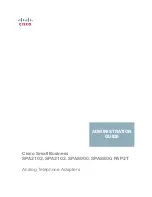
A call is redirected to a preprogrammed destination when it cannot be answered or queued (
Intercept
Routing—Overflow in an Incoming Call Distribution Group
). It is also possible to send a busy tone
(
Busy on Busy
) or disconnect the line.
5.
Incoming Call Distribution Group Controlling Feature
Feature
Description & Reference
Log-in/Log-out
Member extensions can join the group to handle
calls (Log-in) or leave the group for a break
(Log-out).
They can leave the group temporarily when they
are away from their desks, to prevent calls being
sent to their extensions.
®
Supervisory Feature
Incoming Call Queue
Monitor
The supervisor extension can monitor various
information about the incoming calls for each
incoming call distribution group on his display.
®
Log-in/Log-out
Monitor and Remote
Control
Monitor:
The supervisor extension can monitor
the log-in/log-out status of the group members.
Remote Control:
The supervisor extension can
change the status of the members.
®
Conditions
•
One extension can belong to multiple incoming call distribution groups.
•
ICD Group button
An Incoming Call Distribution (ICD) Group button can be assigned on a flexible button for each incoming
call distribution group. It receives the incoming calls to the group.
One extension can have more than one ICD Group button of the same or different incoming call distribution
groups (
Multiple ICD Group
). If all ICD Group buttons in the same incoming call distribution group are
occupied, the next incoming call will be held in a queue or will overflow. If the ICD Group button is not
assigned, incoming calls will arrive at the INTERCOM, CO or PDN button.
The mode of ICD Group buttons can be selected through system programming, as follows:
–
Standard Mode (Group DN Button Mode)
An extension can have an ICD Group button for an incoming call distribution group that the extension
does not belong to through system programming. However, the ICD Group button will not receive calls
to that group.
–
Enhanced Phantom Button Mode
An extension can join an ICD Group just by creating a button for that group, even if the extension was
not previously registered as a member. When the button is created, the extension will be automatically
registered in the lowest-numbered available member slot for the group. Calls to the group can be
received at the extension with no further programming. If no member slots are available for that group,
the button cannot be created and an alarm tone will be heard.
When creating an ICD Group button in this mode, the user can also specify the delayed ringing settings.
If an extension user deletes the last ICD Group button at his extension for a certain group, he will also
be deregistered as a member from that group.
•
Group FWD
52
Feature Guide
2.2.2 Incoming Call Distribution Group Features
Summary of Contents for KX-NS500
Page 14: ...14 Feature Guide Table of Contents...
Page 15: ...Section 1 For Your Safety Feature Guide 15...
Page 18: ...18 Feature Guide 1 1 1 For Your Safety...
Page 19: ...Section 2 Call Handling Features Feature Guide 19...
Page 57: ...632 Maximum Number of Agents Feature Guide 57 2 2 2 Incoming Call Distribution Group Features...
Page 107: ...User Manual References 1 2 1 Basic Calling Feature Guide 107 2 5 4 Trunk Call Features...
Page 193: ...User Manual References 1 4 2 Holding a Call Feature Guide 193 2 13 1 Call Hold...
Page 324: ...324 Feature Guide 2 30 2 Outgoing Message OGM...
Page 325: ...Section 3 Unified Messaging System Feature Guide 325...
Page 375: ...Section 4 Network Features Feature Guide 375...
Page 464: ...464 Feature Guide 4 3 6 Network ICD Group...
Page 465: ...Section 5 System Configuration and Administration Features Feature Guide 465...
Page 560: ...560 Feature Guide 5 6 7 PING Confirmation...
Page 561: ...Section 6 Appendix Feature Guide 561...
Page 578: ...578 Feature Guide 6 5 2 PFMPR Software File Version 004 2xxxx...
Page 579: ...Feature Guide 579 Notes...





































